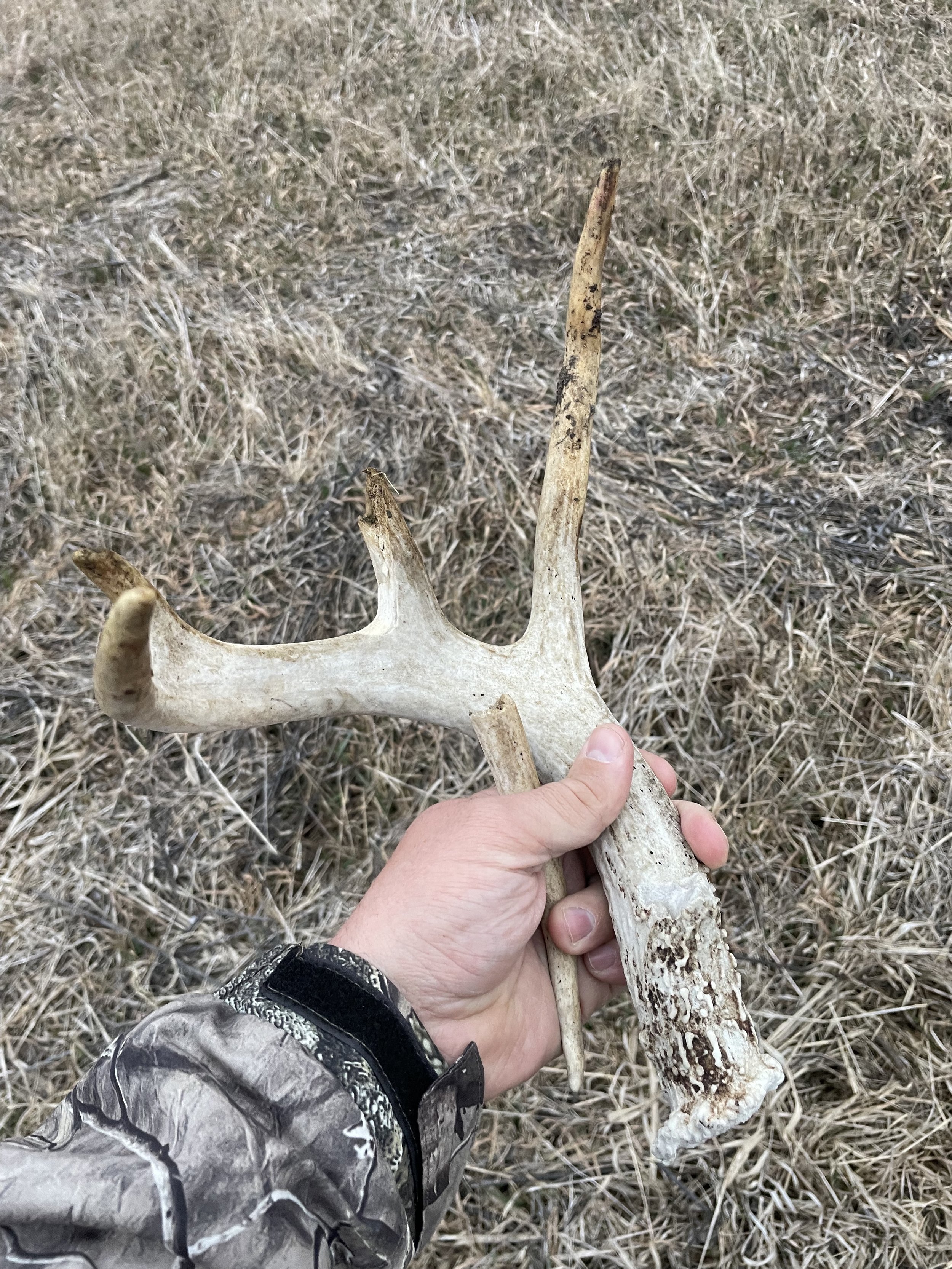Shed Hunting Tips That Actually Help (Part 3)
In this final part of the series, I will dig deep into my shed hunting bag of tricks to share some of the more unorthodox strategies I have used to increase my shed count each season.
Vantage Points
Terrain features are one of the most important aspects to consider when deciphering the behavior of whitetail deer. But deer aren't the only critters that should be using terrain features, we should be using them as well. This especially applies when looking over a vast, uniform area. Field edges and timber are some of the easiest places to look for sheds, but there are a lot of sheds that go unfound in the middle of corn, bean, and alfalfa fields. The reason for this is because of the remaining corn and bean stalks, and dried out alfalfa camouflaging the antlers so effectively. When searching these areas it’s important to find a way to gain some kind of visual advantage- and one of the most simple ways to achieve this is by posting up in a location that has a significant difference in elevation from the surrounding area. Personally I have had more luck searching ag fields by increasing my elevation, but I have also used low points to scan up a hillside to see if I can identify an antler tine sticking up, or a mainbeam glistening. For gaining elevation look for field terraces, bluffs, brush piles or even trees that can be climbed safely to survey the surrounding area. This different view can be the one advantage that tips the odds of finding a shed back in your favor.
Gear Tip: Tough, but comfortable pants are a must have for long days of shed hunting. I strongly recommend the BlackOvis 3D Field Pant. These pants are extremely tough, fit nicely, have tapered legs so they slide into over- the-calf boots well. They also have a deep pocket on the right leg that works great for securely holding your cell phone.
Get Away From People
Deer have done extremely well adapting to the changed landscape here in the midwest. In fact it is believed that the whitetail deer population today is greater than it was before Columbus landed his fleet on shores of the New World. Despite this incredibly labile niche that whitetails occupy in their thoroughly altered ecosystems, they still don’t want to be around humans anymore than they have to be. This is another key factor I include in my search plan for sheds. I start by identifying a spot on the map that has abundant thermal cover, close proximity to food, and southern exposure, and then the final touch is if the location is far from any buildings such as houses, barns, machine sheds, etc. The best of these locations is where none of these man made structures can even be seen. Deer, especially big bucks, know well that they will experience minimal human intrusion in remote locations like these and they can offer a shed gold mine when we access them at the right time.
Livestock Food
This is a year old shed I recently found when looking across a mowed CRP field while I was standing on a slightly elevated hillside. I would have missed this antler if I hadn’t seen the round antler burr while I was scanning the hillside it was sitting on.
Based on my previous tip this one may seem counterintuitive, but a good shed hunting location can be around food sources used by herdsmen for their cows or horses in the Winter. Out west many ranchers find sheds around their bale piles, but large grain spills or piles could offer the same kind of allure to deer trying to find easy calories during the late winter. I know of this strategy working in the midwest, but a rancher I know in western Nebraska finds the majority of his sheds this way, which includes both mule deer and whitetail sheds. So if you get some permission to look out that way, start around these food sources.
Look For Shapes, Colors, and Gleam
This may sound kind of ridiculous, but sometimes folks who are struggling to find an antler might be too focused on the overall shape of an antler which causes them to look past the finer details of the shed that are visible through tall grass, brush or corn stalks. The main features I look for are the round shape of the antler burr (the base of the antler that connects to the pedicle on the buck’s skull), the curvature of the mainbeam, the gray/white color (similar to bone color but a little more gray than old bones, and less red/yellow than fresh bones), and finally the gleam that the smooth antler tissue gives off when the sun shines on it. Picking out these details has netted me more sheds than I can count through the years.
This completes the series on shed hunting tips that actually work. If I had to boil it all down to one thing though it's the willingness to go where a lot of deer winter. This means knocking on doors, hiking out of the way, and driving the long way home in the evenings. If you are willing to do that, I can pretty well guarantee you that you will find more antlers than you have in the past.

